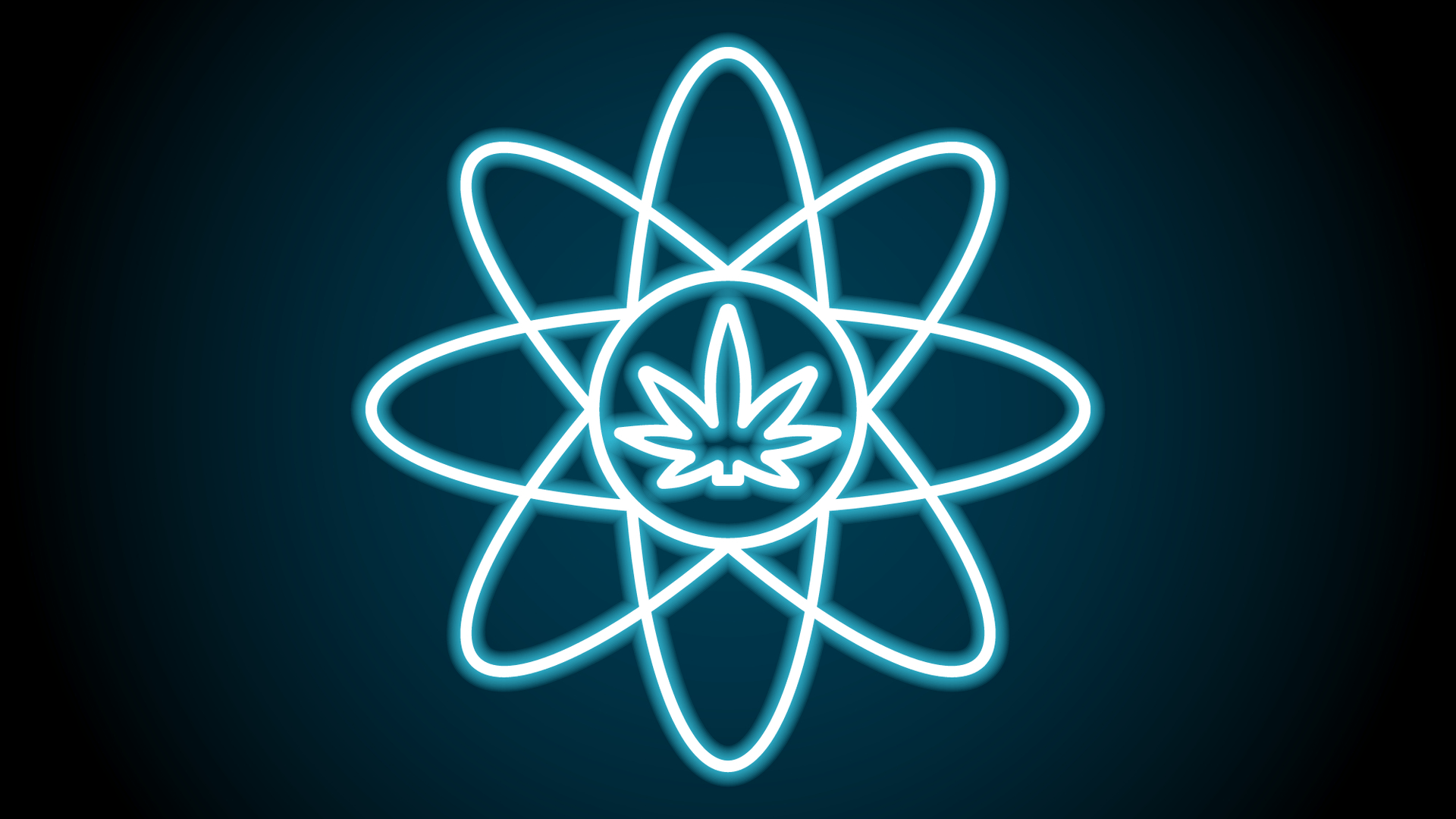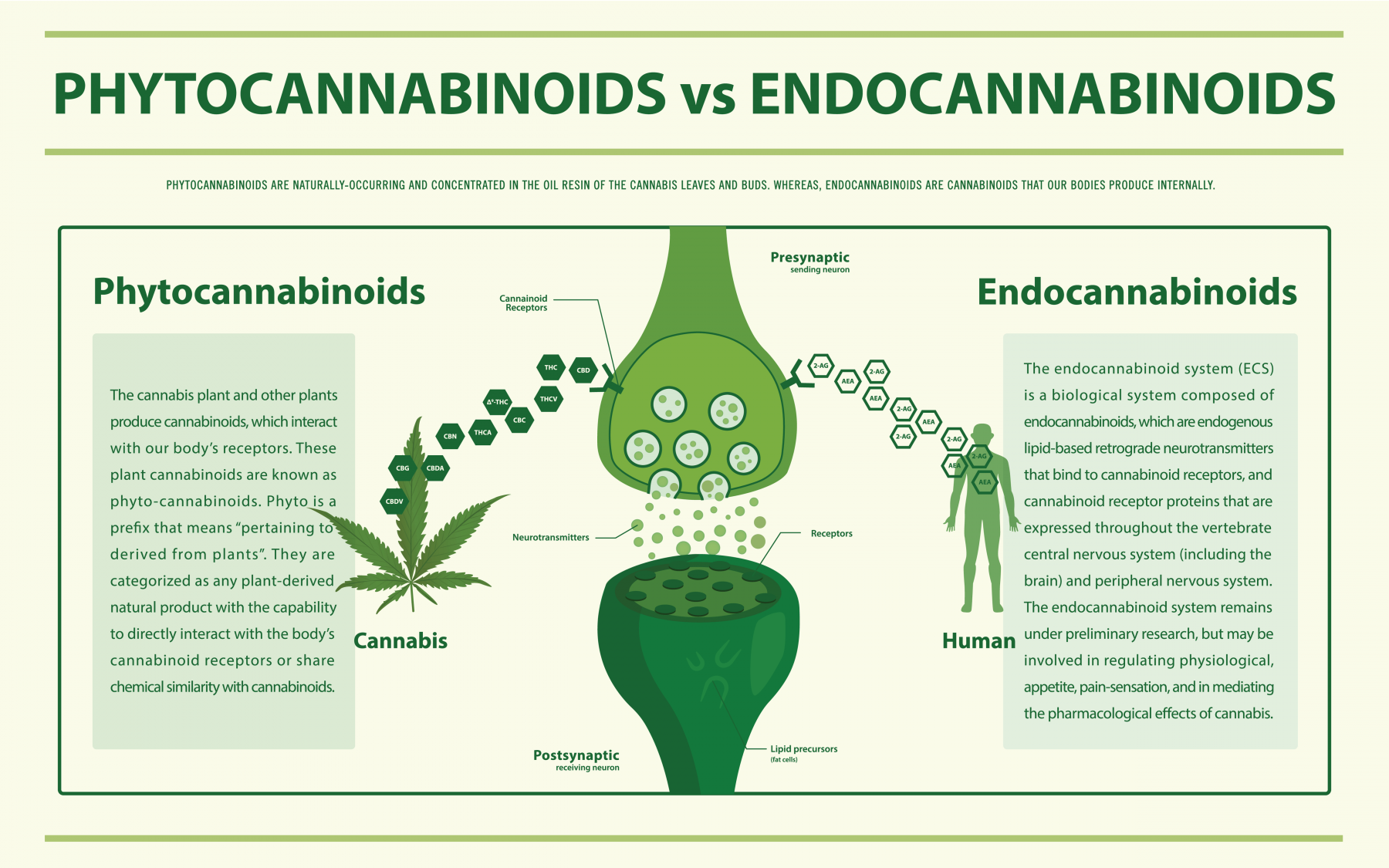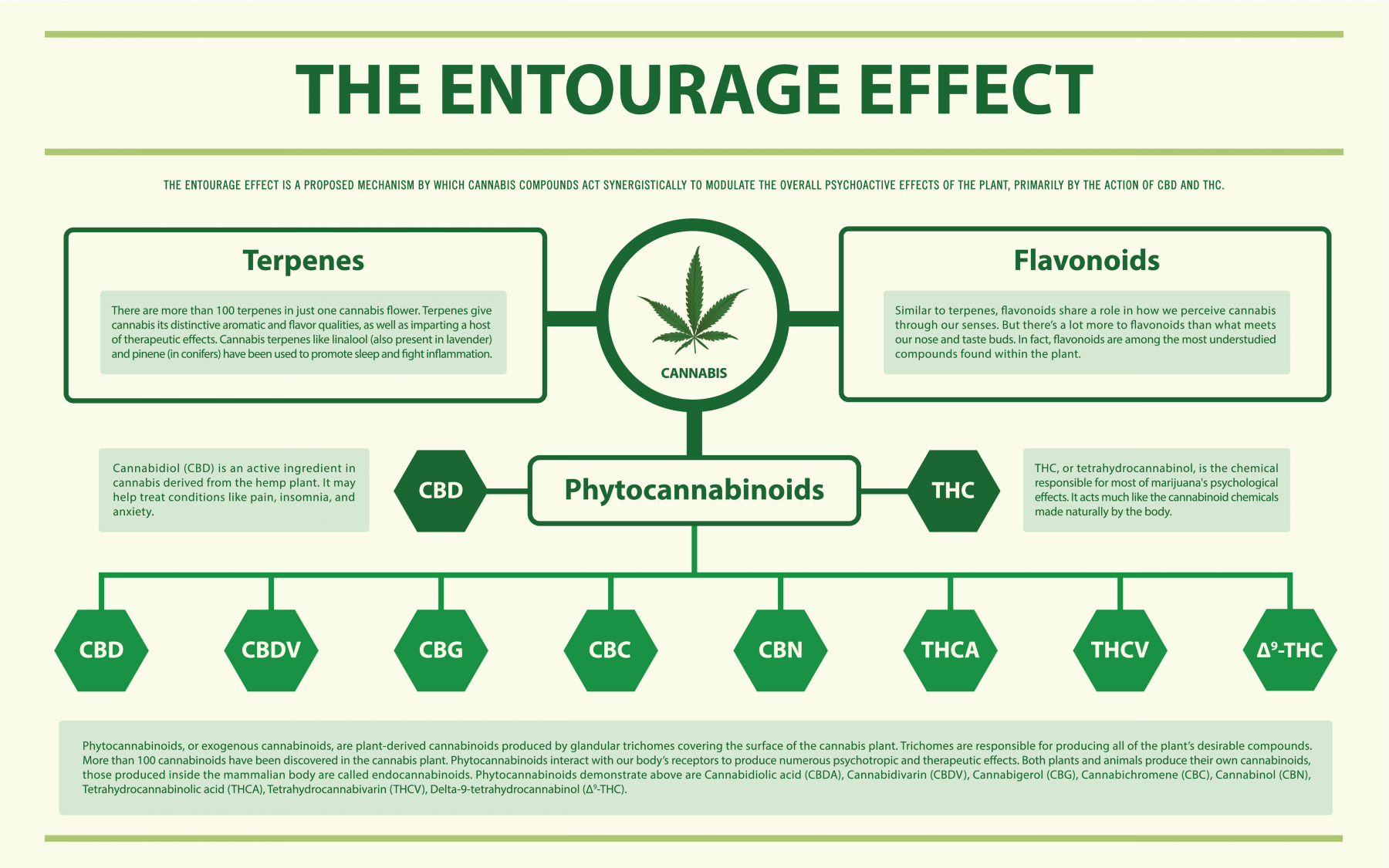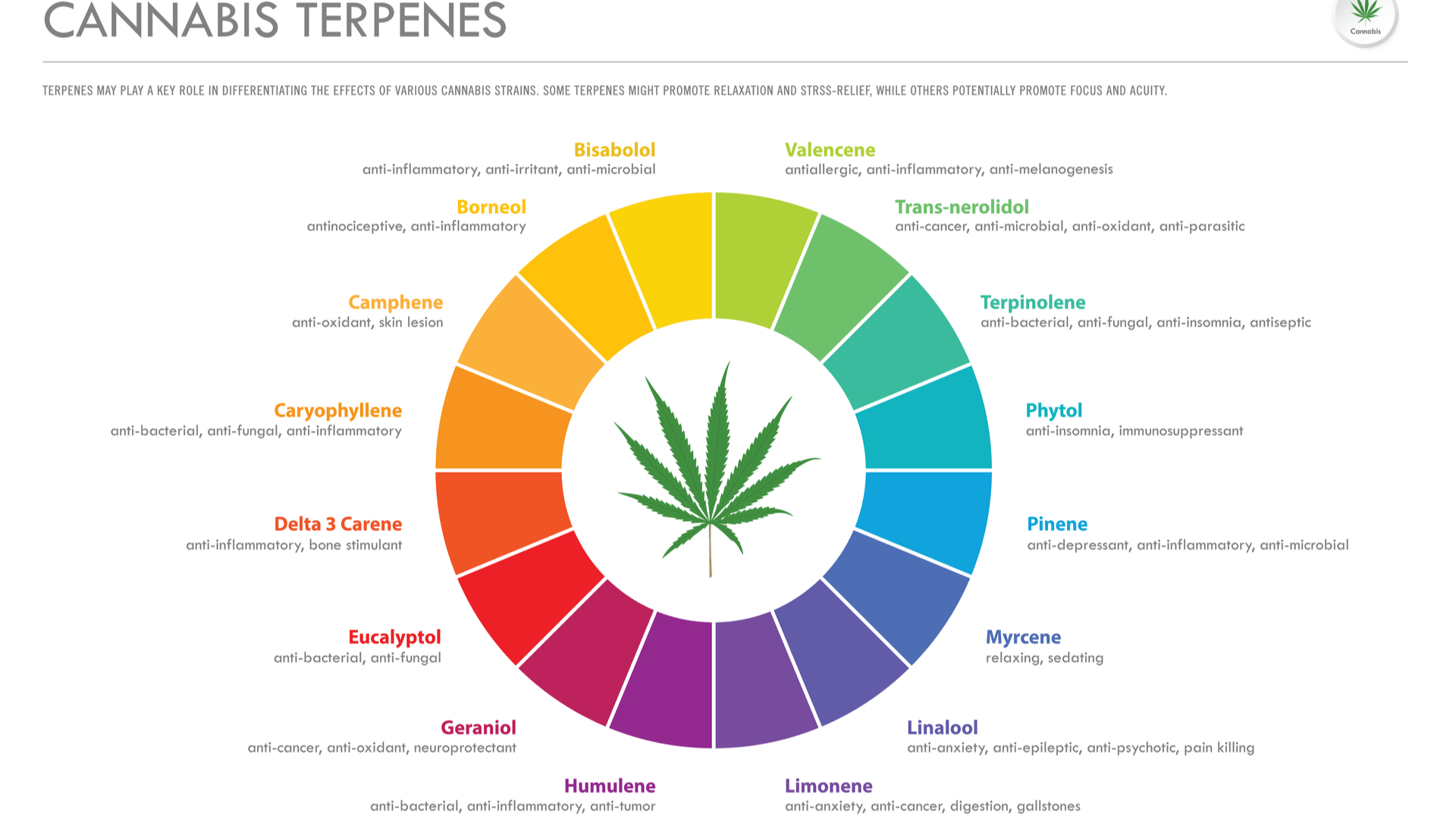What Exactly is the Entourage Effect?

Those new to cannabis may have heard about the “entourage effect” and the importance of understanding it as a critical component of the medical cannabis experience.
What exactly is the entourage effect? Why are so many people talking about it? Furthermore, why are so many medical cannabis clinicians and cannabis patients using the entourage effect to guide cannabis consumption?
Here we’ll break down the entourage effect, it’s origins, what researchers are saying about it, and how the medical cannabis patient can use the entourage effect to maximize cannabis for medical purposes.
The Entourage Effect, Explained
The best analogy to explain the entourage effect comes from prominent cannabis researcher Dr. Ethan Russo: “2 + 2, instead to equaling 4, it gives you an 8 in terms of the benefit.” Simply put the entourage effect describes the interaction of cannabinoids and terpenes within cannabis, with the idea that these compounds create greater effect on the body while working together than working separately in their isolated form.
The Entourage Effect’s was first brought to the science community by Israeli scientists Shimon Ben-Shabat and Raphael Mechoulam (aka. “The Godfather of Cannabis”). In a 1998 paper, observed by looking at animal models that the molecule 2-arachidonoylglycerol (a cannabinoid endogenous to or originating from within our bodies) binds to the cannabinoid receptors CB1 and CB2 within the endocannabinoid system.
As we will feature in further articles, cannabis medicine hinges on the endocannabinoid system, which is a regulator of bodily systems and responsible for bringing the body and mind into homeostasis. Cannabinoids, and some terpenes bind to the receptors (CB1 and CB2) within the endocannabinoid system, engaging this system and creating the effects experienced with cannabis including its medicinal properties.
In Ben-Shabat and Mechoulam’s breakthrough study, it was shown that in the brain, spleen, and gut of mice when combined with other molecules (2-linoleoylglycerol and 2-palmitoylglycerol), 2-arachidonoylglycerol had an improved ability to bind to the cannabinoid receptors, providing a stronger analgesic (pain relieving) response in mice than 2-arachidonoylglycerol in its isolated form.
The aforementioned Dr. Ethan Russo took Ben-Shabat and Mechoulam’s theory and ran with it, recognizing that different cultivars (aka. “strains”) of cannabis produced different effects, and applied the entourage effect theory to the cannabinoids and terpenes found in cannabis.

Pushing the Entourage Effect Further
Dr. Russo first applied the entourage effect to the interaction between THC and CBD, and observed that CBD acts in synergy with THC to increase its therapeutic benefit, antagonize potential adverse effects (i.e. counteract a too-high THC experience), influence how the body reacts to certain drugs, and also helps THC metabolize within the body. This is why many patients may be recommended to try balanced cannabis products that have equal levels of THC and CBD, with the idea that the cannabinoids work in harmony to increase the efficacy of one another.

His further research into the area shows that the entourage effect is also responsible for affecting how cannabinoids target different areas of the body and how the body absorbs cannabinoids. The interaction of compounds in cannabis, according to Russo, can also act as bacterial defense mechanisms and neutralize negative side effects of some drugs.
Put simply, the entourage effect is enacted through interaction between cannabinoids, and the other components of cannabis, which include terpenes, aldehydes, thiols, and flavonoids. Each of these components hold certain properties of their own, but are much more effective when working together as part of the whole cannabis plant. To go back to Dr. Russo’s explanation, “2 + 2, instead to equaling 4, it gives you an 8 in terms of the benefit.”
The Role of Terpenes in The Entourage Effect

While Dr. Ethan Russo certainly isn’t the only researcher in cannabis, he is very much responsible for what we know about the entourage effect. After looking at how cannabinoids like THC and CBD interact, Dr. Russo turned his attention to terpenes.
Terpenes are the aromatic compounds found in the essential oils of all plants, including cannabis. For instance, when you cut into a lemon, that fresh, zesty smell is due to the terpene limonene. When limonene is in a cannabis cultivar, users often report energetic effects. Linalool is another commonly-recognized terpene, as it’s the prominent terpene in lavender, which has been used for centuries as a sleep aid for its sedative properties. This is why cannabis cultivars containing linalool may bring on relaxing, calming properties.
Russo’s research on terpenes and the entourage effect examines how terpenes interact with cannabinoids, specifically in terms of how cannabis may be used for the treatment of pain, inflammation, depression, anxiety, addiction, epilepsy, cancer, fungal and bacterial infections. Some examples of the synergies he proposed were that linalool, combined with limonene and CBD may provide more of an anti-anxiety effect when used together than on their own. He also posed that the terpenes caryophyllene, linalool, and myrcene work well in synergy with cannabinoids to help with sleep issues.
Embracing the Entourage Effect in Cannabis Medicine
Knowing about the entourage effect helps cannabis doctors and patients be more intentional when choosing cannabis products for specific medical conditions. Many physicians and dispensaries will recommend full-spectrum or high-terpene full-spectrum products to patients because of the effect of cannabinoids, terpenes, and other plant components when working in harmony. While cannabis used to focus just on THC, it’s becoming increasingly important to integrate terpenes into the cannabis experience for desired outcomes.
In further articles, we will share more about terpenes and their importance in the entourage effect and the medical cannabis experience. We’ll discuss some common terpenes and their medicinal and therapeutic properties to demonstrate why medical cannabis is much more than just THC or CBD.
At Compassionate Clinics of America, we have studied the importance of the entourage effect for cannabis medicine, which informs our practice in helping you get your medical cannabis recommendation and choose the right products for your medical condition. Connect today to talk to a qualified health care physician about how cannabis medicine can benefit you in your journey towards well-being and health. Stay tuned to our blog as we continue to release more educational information to help patients maximize their cannabis medicine experience.
























